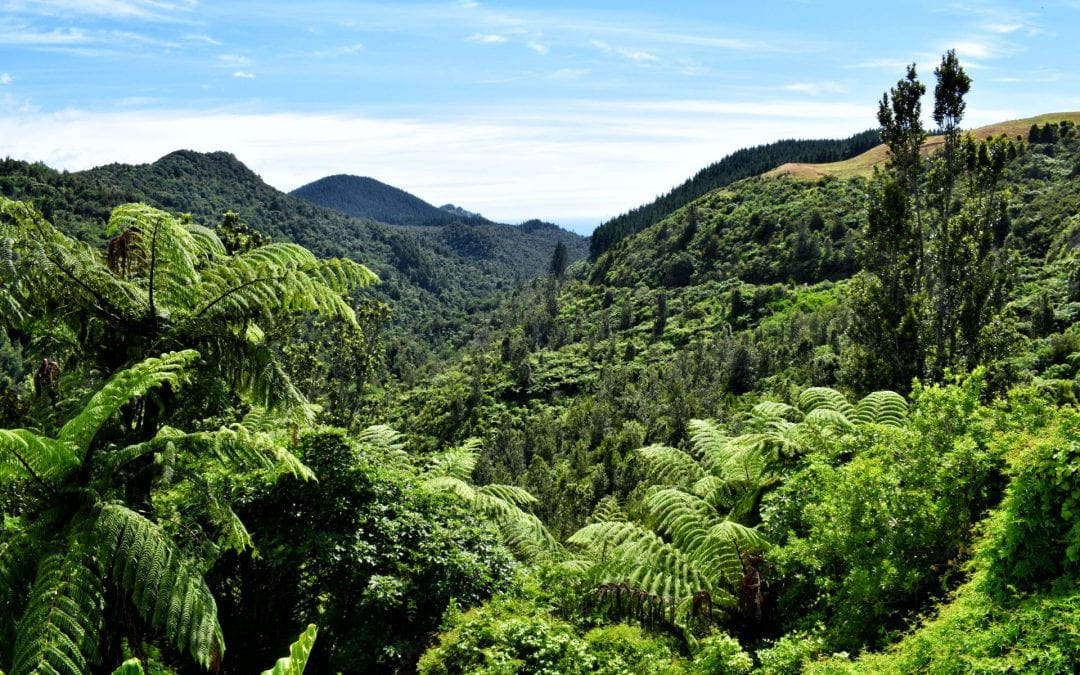By Anne Salmond
The use of ‘permanent’ plantations of pine trees solely to build up carbon offsets is solving one harm with another, writes Dame Anne Salmond. There is an alternative.
As Argentinian ecologist Sandra Diaz said during the 2021 Nobel Prize Winners Summit: “We have incontestable evidence that the living fabric of the earth is being unravelled fast. The only reason this is happening is the present dominant model of appropriating nature. Runaway climate change, massive biodiversity loss and intolerable social and environmental inequality among people are simply the three most serious symptoms of the same root problem. They must be tackled together.”
At present, there’s a concerted push for farming carbon with ‘permanent’ monocultures of pine trees in New Zealand (‘The Case for Carbon,’ NZ Herald September 24).
Let’s be very clear. A joint workshop of the Intergovernmental Panels on Climate Change and Biodiversity has recently warned against trying to tackle climate change with this kind of carbon farming.
They described it as an ‘impending ecological disaster’ that destroys local ecosystems and the livelihoods of local people. It’s as dangerous to ignore scientific advice on this matter as it is on Covid-19, or climate change.
This international advice is backed up by local reports, including the Baker Ag report commissioned by Beef and Lamb NZ, and the recent BDO report on ‘permanent’ carbon farming with pine trees in Tairāwhiti, forecasting catastrophic impacts on local landscapes, communities and economies.
The market for carbon, created in response to climate change, is a case of trying to solve ‘wicked problems’ driven by extractive philosophies with more of the same. Ultimately, it’s self-defeating.
The idea of attracting investors, many of them offshore, to plant large swathes of our countryside in industrial plantations of exotic conifers that will never be harvested has little to do with long-term benefits for local landscapes and communities.
Instead, its about trading in commodities – in this case, carbon – on a global ‘futures’ market. By exporting many of the profits and leaving local communities to carry many of the costs, this kind of “permanent” carbon farming risks massive jobs losses in some regions and the collapse of rural industries in New Zealand.
The farming community is right about this one, and the Government needs to listen.
Planting pine trees across the countryside purely for carbon also ignores the risks of fire and pests with climate change; the biodiversity crisis; and the need to secure local prosperity and food production. It is a classic case of silo thinking.
While native trees like totara grow for perhaps 800-900 years, sequestering carbon over many generations, pine trees grow for perhaps 80-100 years – a classic case of short-term thinking.
Why should we support this kind of carbon farming in New Zealand, just because some people have invested in it, and are trying to protect their gains? It’s time our leaders stop listening to those with vested interests, and focus on the future of our children and grandchildren instead.
Across the globe, there is a push towards nature-based ways of tackling climate change. Twenty years ago in countries like Germany, they realised clear-fell plantation forestry was a kind of strip mining, damaging topsoils, rivers and the ocean as well as biodiversity, and turned to ‘nature-based’ forestry instead.
This kind of forestry is based on mixed species, mixed age indigenous forests, closely adapted to local landscapes. It relies on regeneration instead of planting, and uses very few sprays. The trees are harvested in small coups, leaving the canopy intact, protecting the soil.
‘Nature-based’ forestry generates high value, unique timbers, and rewarding, long-term jobs. Foresters are trained in ecology, and take care of the waterways and animals in their forests. Many of these forests are open to the public by law, and are extensively used for tourism and recreation.
With our magnificent native forests, yielding unique, high value timbers such as totara, rewarewa, beech, matai, tawa and many others, Aotearoa is superbly well placed to invest in this kind of forestry. There’s excellent information about it on the Pure Advantage O Tātou Ngāhere website.
By restricting the category of ‘Permanent Forest,’ which is about to be introduced in the Emissions Trading Scheme, to indigenous forests, and by rewarding their long-term sequestration of carbon with NZ Units at rates competitive with pine trees, the Government could build this kind of industry with private investment, backed by publicly funded research and trials.
The country has everything to gain from this, and nothing to lose. It may disappoint some of those who have invested in carbon farming with pine trees, but governments are there to serve their people; and a change is what can happen if you gamble on a high risk futures market.
This article was originally published on Newsroom and was republished with permission. For the original, click here.
Dame Anne Salmond is a Distinguished Professor in Anthropology at the University of Auckland.
Disclaimer: The ideas expressed in this article reflect the author’s views and not necessarily the views of The Big Q.
You might also like:
Sustainability Bites: How do trees look after us, and how can we look after them? 🔊

